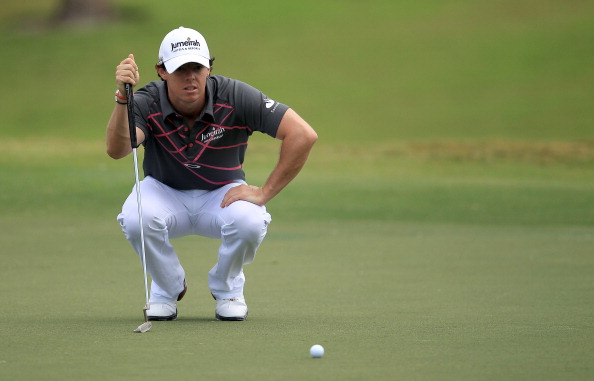
A lesson in golf?
I’ll be the first to admit that televised golf is not the most exciting sport to watch. However, I was recently struck by an interesting behavior exhibited by the players.
Lining up the putt…
When a pro is lining up a difficult putt, you will notice that they begin by looking at the hole from behind the ball to get a feel for how the green breaks. They usually get their eyes closer to the ground so that they don’t miss any details. One would think, this is the most important angle, because it is the angle that the player will be using as they make the actual putt, yet a good player will rarely stop with just this one view.
The long walk around…
What happens next is the most interesting from a human perspective. They usually will start walking in a wide arch around the hole, pausing at times to once again get their eyes closer to the ground. They usually do not stop this exercise until they have walked around the hole, and are staring at the pin 180 degrees from where they first started. Some have called this, “the long walk around.” Only once they have considered the shot from every perspective available to them do they actually make the stroke. I imagine that this discipline requires some practice.
The putting green of life…
In life, and certainly in business, we also are required to make high pressure putts. Oftentimes, these putts need to be made in the form of relational decisions. A customer might be asking for a special consideration, an employee may be asking for a raise, or a family member could be asking for help. Sometimes the stakes of these decisions are high! In fact, they sometimes can make or break a relationship. Perhaps in the game of life, a relationship is not decided with a margin of one stroke, but if you put enough decisions together, the cumulative effect can be significant.
Human Nature…
Often when the pressure of the game is on, human nature could lead some to take a more myopic approach than that of the professional golfer. In the fast paced world that we live in, we often are bombarded by too much information. Overtime, this informational-overload can bias us towards information-avoidance. Sometimes the more information we gather regarding a decision that must be made, the more complex, nuanced, and confusing we realize the decision to be. A basic theory of learning and motivation discovered by psychologists is that humans will work hard to avoid confusion because confusion is a highly aversive state of being. When you put chronic information overload together with an innate desire to avoid confusion; the result is that we often make the mistake of making snap judgements or decisions in order to accommodate our own psychological needs. Unfortunately, this does not always lead to the best results.
Another name for the “long walk around…”
In life, taking the “long walk around” is known as empathy. Empathy requires us to look at the decision from all angles, but perhaps most importantly, the angle of the person 180 degrees from where we stand in regards to the objective. Taking the long walk around the objective is the practice of forcing yourself to try and view the objective, situation, or decision from the view of that other person. To effectively get our “eyes near the ground”, we have to try to understand their emotional state, their psychological needs, and the pressures that prime them to see the “green” in the way that they see it.
Just as in golf, this takes a lot of discipline and practice. It is much easier to focus on why our perspective is correct than it is to try to understand why the other person feels they way that they do. However, with the advantage of only one perspective, we will often find that our putts are falling short, or sailing past the hole and out into the rough! While we have saved ourselves the psychological effort on the front end of not investing in the effort required to practice empathy, we find ourself paying the vast emotional bill of living a life of being misunderstood by those most important to us and not having the slightest clue why we are so misunderstood!
It’s your putt…
So the next time your on the green, don’t give in to the desire to take a snap shot. Slow down, take a breath, and take the long walk of empathy around.
Phillip T. Stoller

